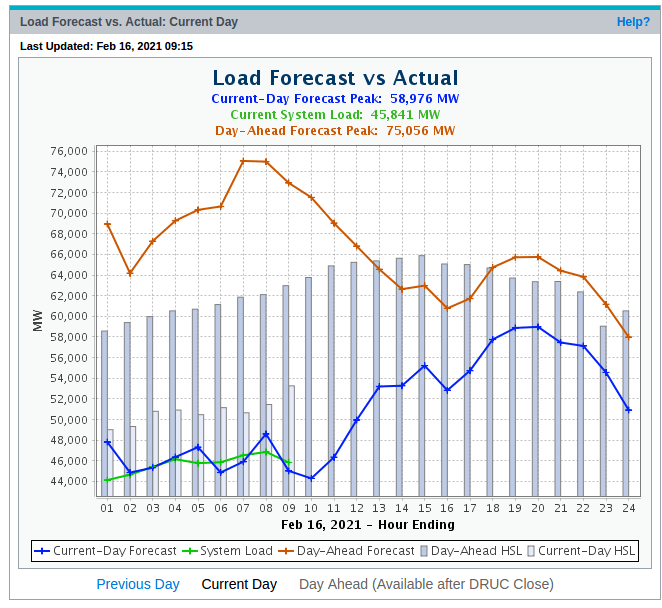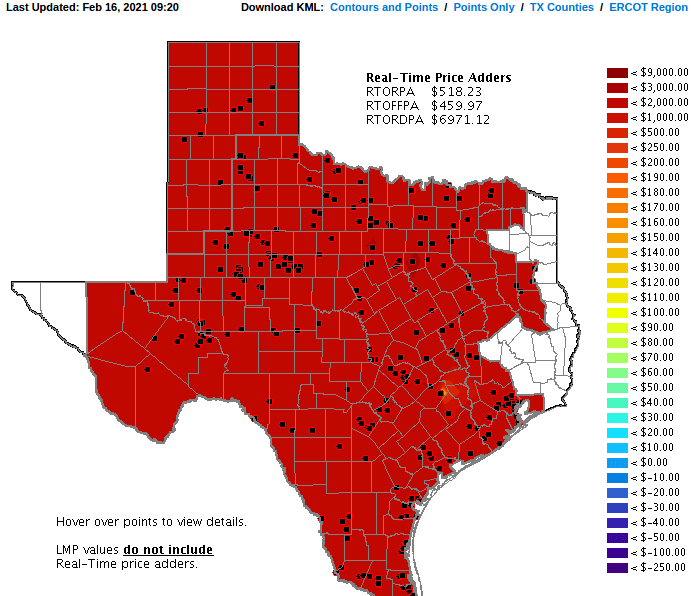They had a similar reduction in elec power in Texas in 2016, due to freezing of small exterior water pipes at some coal fired plants that were on standby. The plants could not restart to meet the increased demand due to frozen pipes, caused by inadequate freeeze protection. I suppose the original design assumption was the plant would be based loaded and that constant flow in the pipes would prevent freezing.The new mode of operation ( 2 shift) caused by increased reliance on wind energy violated a design assumption. Design assumptions are the cause of a lot of real life problems.
The increased use of wind energy imposes other problems in the electrical power supply system, again demonstrated in Texas ERCOT 10 yrs ago. The wind turbines have a max permitted operating wind speed of 55 mph, and as soon as that speed is reached, they disconnect to avoid overspeed. When you have thousands of wind turbines on a large west texas wind farm shut down at the same time due to a wind storm, it caused a 1.5 GWe loss of power within 45 minutes, and that forced ERCOT to shutdown large industrial power consumers. Then the turbines restarted when the wind died down to 54.9999 mph, and that caused a surge in supply. Thkis led to the requirement to provide airspeed indicators at each farm , so the ISO can predict the wind turbine outage soon enough to start fast startup suppliers. This problem will become a nationwide problem if and when the UHVDC transmission lines are completed, connecting the central plains wind turbine farms to the 2 coasts.
"...when logic, and proportion, have fallen, sloppy dead..." Grace Slick


